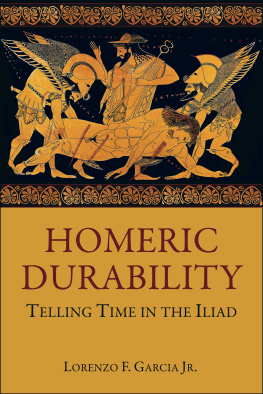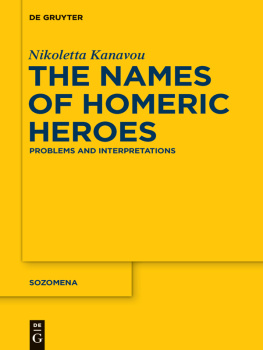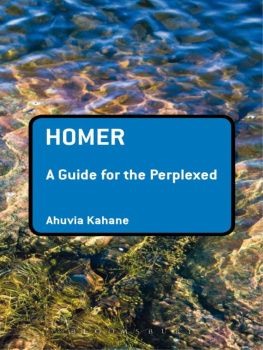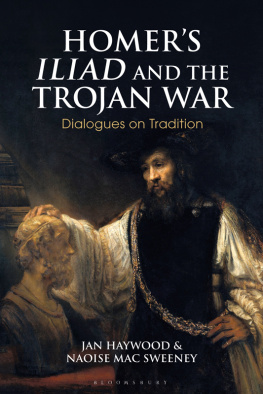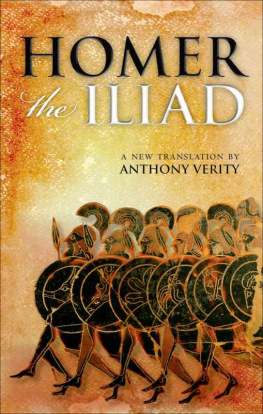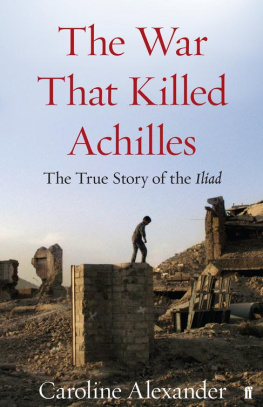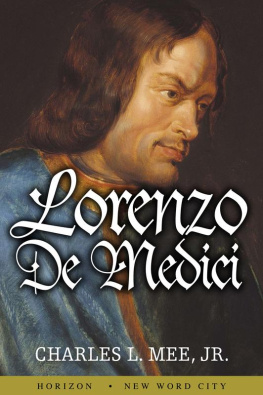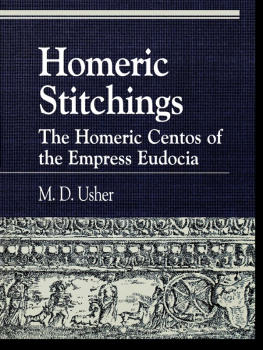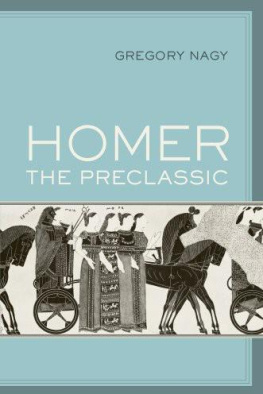Acknowledgments
The groundwork for this manuscript began in 2005 while I was working on my doctoral thesis at UCLA and became intrigued with questions of architecture, particularly the permanence of monumental constructions and their status as material analogues to Homeric kleos aphthiton. Since then, the material that comprised but one part of my dissertation project has grown, with the assistance of many people, into a larger, self-contained work.
First, I wish to thank my former teachers, who inspired me with their work and passion, and continue to foster my ideas: Ann Bergren, Monica Cyrino, Robert Gurval, Michael Haslam, Katherine King, Kathryn Morgan, Sarah Morris, John Papadopoulos, and Alex Purves. My debt to these scholars and friends for their guidance and encouragementespecially Ann Bergren, the sine qua non of this projects original formcannot be adequately stated.
I enjoyed opportunities to present material from this project at annual meetings of the American Philological Association (Chicago, 2008) and the Classical Association of the Middle West and South (Grand Rapids, 2011; Baton Rouge, 2012), and am thankful for the comments, questions, and suggestions from presiders, panelists, and audience members, including Egbert Bakker, Jenny Clay, Andromache Karanika, Andrew Lear, Bruce Louden, Melissa Mueller, Craig Russell, and Dan Turkeltaub.
I am grateful to Ann Bergren, Robert Gurval, Kathryn Morgan, and John Papadopoulos for creating opportunities for me to present my work to the UCLA Classics Department; to Monica Cyrino, Natasha Kolchevska, and Walter Putnam for the chance to speak at UNMs Department of Foreign Languages and Literatures; and to Philip Holt for invitations to participate in the Wyoming Humanities Council Summer Classics Institute at the University of Wyoming.
Ann Bergren, Monica Cyrino, Christopher Eckerman, Owen Goeslin, Karen Gunterman, Michael Haslam, Christopher Johanson, Katherine King, Alex Purves, Charles Stocking, and Lowry Sweeney read the manuscript (or portions thereof) at various stages of completion and offered valuable expertise and advice. Brent Vine and Tanya Ivanova-Sullivan helped me with questions about linguistics and provided me with bibliography; Katja Schroeter assisted me with translations of German; and Rajeshwari Vallury kindly looked over my translations of French. Emily Kratzer read more than one draft of the manuscript in its entirety and helped improve it immeasurably.
I extend thanks to my students, present and former, whose enthusiasm was sustaining: Scott Barnard, Daniel Bellum, Caley McGuill, Israel McMullin, Trigg Settle, and Jessica Wells.
I am deeply grateful to Casey Du Hackney, Mary Ebbott, Jill Curry Robbins, and the entire editorial team at the Center for Hellenic Studies for their friendly guidance and commitment to seeing this project through to the end. In particular, two anonymous readers provided generous and keen observations that led me to rethink and reformulate several positions. My work is stronger and more original thanks to their criticisms and encouragements. Whatever shortcomings remainalas!are mine alone.
I thank my parents, Lorenzo F. Garcia and Lorraine Suazo-Garcia, for their support, encouragement, and love.
Finally, I wish to acknowledge Emily Kratzer, whose love, constant support, and ever-willingness to listen to my ramblings on Homer have sustained me these many years.
Introduction. Homeric Durability: Time and Poetics in Homers Iliad
1. Iliadic temporality: the still perfectly and the not yet
I begin not with Homer, but with David Finkels recent book The Good Soldiers (2009). Finkels book is an account of the U.S. army infantry soldiers of the 2nd Battalion, 16th infantry division (known as the Rangers) out of Fort Riley, Kansas, under command of Lieutenant Colonel Ralph Kauzlarich. Finkel documents his observations as an embedded journalist with the 2-16 over an eight-month period in 2007 during the first year of the surge as the United States drastically increased the number of ground troops in Iraq. The first page of Finkels book begins with a curious rhetorical strategy, narrating the past from a future-perfect perspective:
His soldiers werent yet calling him [= Lt. Col. Kauzlarich] the Lost Kauz behind his back, not when this began. The soldiers of his who would be injured were still perfectly healthy, and the soldiers of his who would die were still perfectly alive. A soldier who was a favorite of his, and who was often described as a younger version of him, hadnt yet written of the war in a letter to a friend, Ive had enough of this bullshit. Another soldier, one of his best, hadnt yet written in the journal he kept hidden, Ive lost all hope. I feel the end is near for me, very, very near. Another hadnt yet gotten angry enough to shoot a thirsty dog that was lapping up a puddle of human blood. Another, who at the end of all this would become the battalions most decorated soldier, hadnt yet started dreaming about the people he had killed and wondering if God was going to ask him about the two who had been climbing a ladder. Another hadnt yet started seeing himself shooting a man in the head, and then seeing the little girl who had just watched him shoot the man in the head, every time he shut his eyes. For that matter, his own dreams hadnt started yet, either, at least the ones that he would rememberthe one in which his wife and friends were in a cemetery, surrounding a hole into which he was suddenly falling; or the one in which everything around him was exploding and he was trying to fight back with no weapon and no ammunition other than a bucket of old bullets. Those dreams would be along soon enough, but in early April 2007, Ralph Kauzlarich, a U.S. Army lieutenant colonel who had led a battalion of some eight hundred soldiers into Baghdad as part of George W. Bushs surge, was still finding a reason every day to say, Its all good.
Finkel 2009:35; emphasis added
Finkels book has been hailed as perhaps being the best book on war since the
Iliad, [ and after reading it, I can attest to its manifold Iliadic qualities, but perhaps none so intriguing as the temporal strategy of its narration. At the beginning of Finkels narrative Kauzlarichs soldiers were
not yet unhappy, out of control, in pain, or dead. The very structure of the
not yet indicates the present circumstance but contains the imminent future as well: though at the present moment Kauzlarichs men are still perfectly healthy and still perfectly alive, they are not long to remain so, for the narrative marks soldiers as
not yet injured,
not yet dead, but soon to be. Kauzlarichs nightmares hadnt yet started but would be along soon enough.
I begin with Finkels not yet, still perfectly, and would be because I believe these temporal markers are authentically Homericmore specifically, authentically Iliadic. The Iliadic quality of the not yet and the would be are at the heart of this study of the representation of time in Homers Iliad. For Homers Iliad represents its own poetic goals in temporal termsnamely, as the commemoration of its hero Achilles. As a memorial, a work that preserves the memory of its hero, I argue that the Iliad is caught between these temporal modes: it remembers the life of its hero who has already died, but preserves that memory as not yet forgotten. It projects a past into the future, and as such, the epic claims for itself a certain durability: it endures beyond the life of its hero and aims to protect that memory for the future. It is the nature of this durability I want to investigate here. The epics projected future, I aim to demonstrate, functions like Finkels narrative would be: the projected future is temporally bound, such that its end, though deferred for the moment, is essentially completed. It is the narrative of the future perfect.

